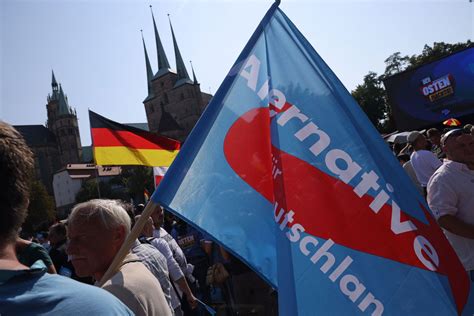
(Supporters of the far right Alternative for Germany (AfD) political party gathering in Erfurt, Germany, August 2024.)
The political landscape of Europe is shifting, with far-right parties gaining significant traction among younger generations. Recent European election results indicate that many young voters are increasingly drawn to nationalist and populist movements, challenging traditional political norms. But what is driving this trend?
Disillusionment with Traditional Parties
Many young voters feel that mainstream political parties have failed to address their concerns effectively. Frustration with bureaucracy, economic struggles, and perceptions of corruption have led them to seek alternatives.
According to data from ThinkYouth, parties such as Alternative for Germany (AfD), National Rally (RN) in France, and the Confederation of Freedom and Independence party in Poland have gained substantial support from younger demographics. These parties position themselves as defenders of national sovereignty, critics of European bureaucracy, and advocates for policies that challenge the status quo.
A Shift in Political Identity: The Rise of Right-Wing Counterculture
For some, aligning with nationalist or far-right ideologies represents a form of political rebellion. Rita Matias, leader of the youth wing of Portugal’s Chega! party, argues that younger generations are embracing right-wing politics as a counterculture movement.
“The counter-culture is increasingly to the right,” Matias claims, suggesting that these movements allow young people to express views they feel are suppressed by mainstream political discourse. Social media has played a crucial role in amplifying these perspectives, offering a platform for leaders to communicate directly with their audience in a way that traditional politicians often struggle to match.
The Role of Social Media and Direct Communication
Hard-hitting digital campaigns have been instrumental in attracting young voters to far-right parties. The Alternative for Germany (AfD) has been labeled the “TikTok party” due to its effective use of social media to spread emotionally charged, easily digestible messages.
Similarly, Spain’s radical anti-system movement, The Party’s Over (Se Acabó la Fiesta), led by Alvise Pérez, has leveraged Telegram and Instagram to engage young, Eurosceptic voters. By framing his campaign around anti-corruption rhetoric and direct engagement, Pérez has built a significant following among those disenchanted with traditional political structures.
A Wake-Up Call for Traditional Parties?

(María Rodríguez Alcázar, President of the European Youth Forum)
Despite the rise of far-right parties, some experts caution against overestimating the extent of this political shift. Maria Rodríguez Alcázar, president of the European Youth Forum, argues that the far-right’s success is largely due to mainstream parties failing to engage young people effectively. She suggests that addressing youth concerns through better representation and clear policy solutions could counteract this trend.
Gerosa adds that promoting critical thinking and digital literacy could help young voters navigate political messaging more effectively, reducing the influence of emotionally charged, factually inconsistent campaigns.
Conclusion: A Changing Political Landscape
The growing support for far-right parties among young Europeans reflects broader dissatisfaction with traditional politics, economic uncertainty, and the power of social media in shaping political identities. Whether this trend continues or shifts in another direction may depend on how well mainstream parties respond to the concerns of younger generations. Addressing economic insecurity, increasing youth political representation, and fostering a more inclusive political dialogue could be key to shaping Europe’s future political landscape.


